Rosa chinensis, commonly known as the China rose or Chinese rose, is a species of flowering plant in the rose family, Rosaceae. In addition to its ornamental value, some traditional medicinal uses have been associated with it. The petals and other parts of the plant have been used in traditional herbal remedies in certain cultures.
As the name suggests, this compact-growing plant species is a native flora of China. Although often cultivated as a shrub, this beautiful wild rose can grow up to 10 feet and 6 feet wide. On these occasions, it’s known as a climber.
The continuous spring-to-frost bloom and unique quality of its flowers makes this a plant you’ll want to learn about, so don’t go anywhere.
Rosa Chinensis Common Names
Rosa chinensis is the scientific name of the commonly known China rose. You may also see this plant type referred to by other common names, such as:
What Are You Foraging For Right Now?
We're thrilled to hear your ideas. What would you like to submit today? Feel free to share your thoughts and experiences with us.
- Chinese rose
- Bengal rose
- Rosa indica
- Rosa x odorata
- Slater’s Crimson China
- 月季; pinyin: yuèjì (Chinese translations)
Other synonyms can also include:
- Tea rose ‘Mutabilis’
- Rosa ‘Tipo Ideale’
- Rosa ‘Mutabilis’
Why is it Called China rose?
The name “China rose” is derived from the plant’s place of origin and historical association with China.
Is China rose and hibiscus the same?
No, China rose and hibiscus are not the same; they are two different plants that belong to separate plant families and genera.
China rose is a type of rose within the Rosaceae family, and hibiscus belongs to the Malvaceae family.
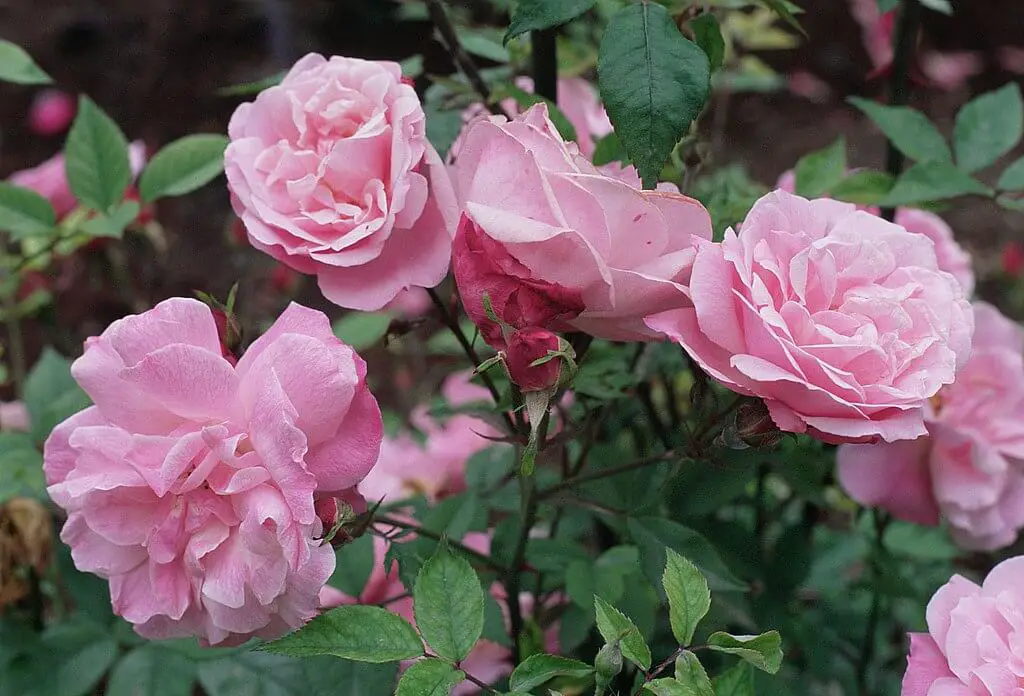

What color does Rosa chinensis come in?
Rosa chinensis is a small shrub with easily identifiable, cupped semi-double flowers. The stems are entirely thornless, which is excellent for pruning.
The flowers of Rosa chinensis can be found in shades of pink, red, apricot, yellow and white, and there can also be variations and blends within these color ranges.
cultivars and varieties
Some popular types and cultivars of Rosa chinensis include:
- ‘Old Blush’: Also known as ‘Parson’s Pink China’, this is one of the oldest China rose cultivars. It features small, semi-double to double pink flowers that bloom throughout the growing season.
- ‘Mutabilis’: This cultivar is known for its unique characteristic of changing flower colors as they age. The flowers start as deep pink, fade to lighter pink, and eventually turn to shades of orange and yellow.
- ‘Cramoisi Superieur’: A classic China rose with rich red, semi-double blooms. It’s known for its prolific flowering and intense fragrance.
- ‘Hermosa’: This cultivar produces clusters of pale pink, fully double flowers. It’s valued for its continuous blooming and disease resistance.
- ‘Louis Philippe’: A popular China rose with deep red, semi-double flowers. It’s known for its adaptability and disease resistance.
- ‘The Green Rose’: This unique cultivar is often referred to as the “Green Rose” because its petals are actually more like sepals, giving the flowers a green appearance.
- ‘Archduke Charles’: Named after the Archduke Charles of Austria, this cultivar showcases flowers with a color gradient, transitioning from red to pink as they age.
- ‘Perle d’Or’: A compact China rose with small, double flowers that are a delicate apricot-yellow color.
- ‘Climbing Pinkie’: A climbing China rose that produces clusters of small, pink flowers. It’s a vigorous grower suitable for trellises and arbors.
- ‘Ducher’: A white China rose with semi-double flowers and a light fragrance. It’s often used as a parent in hybrid tea rose breeding.
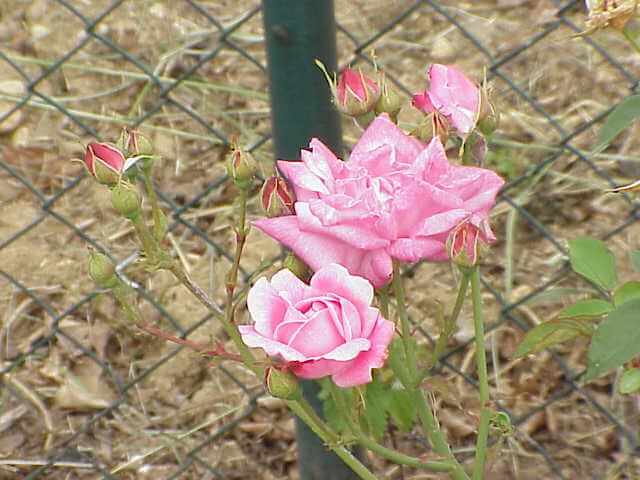

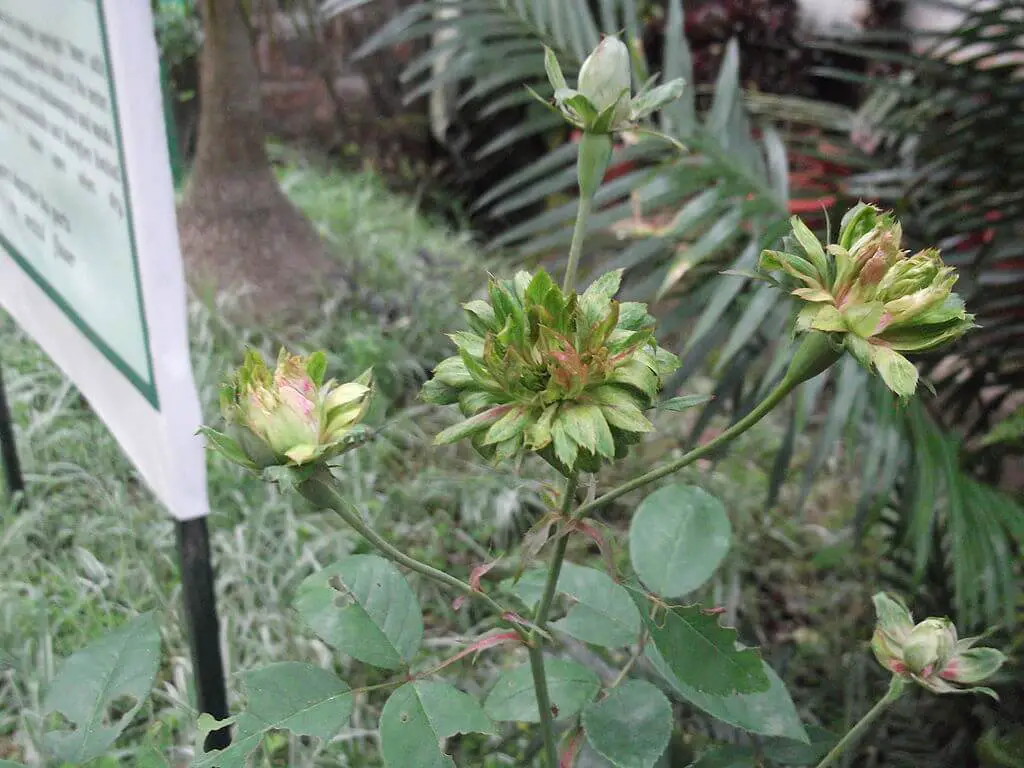
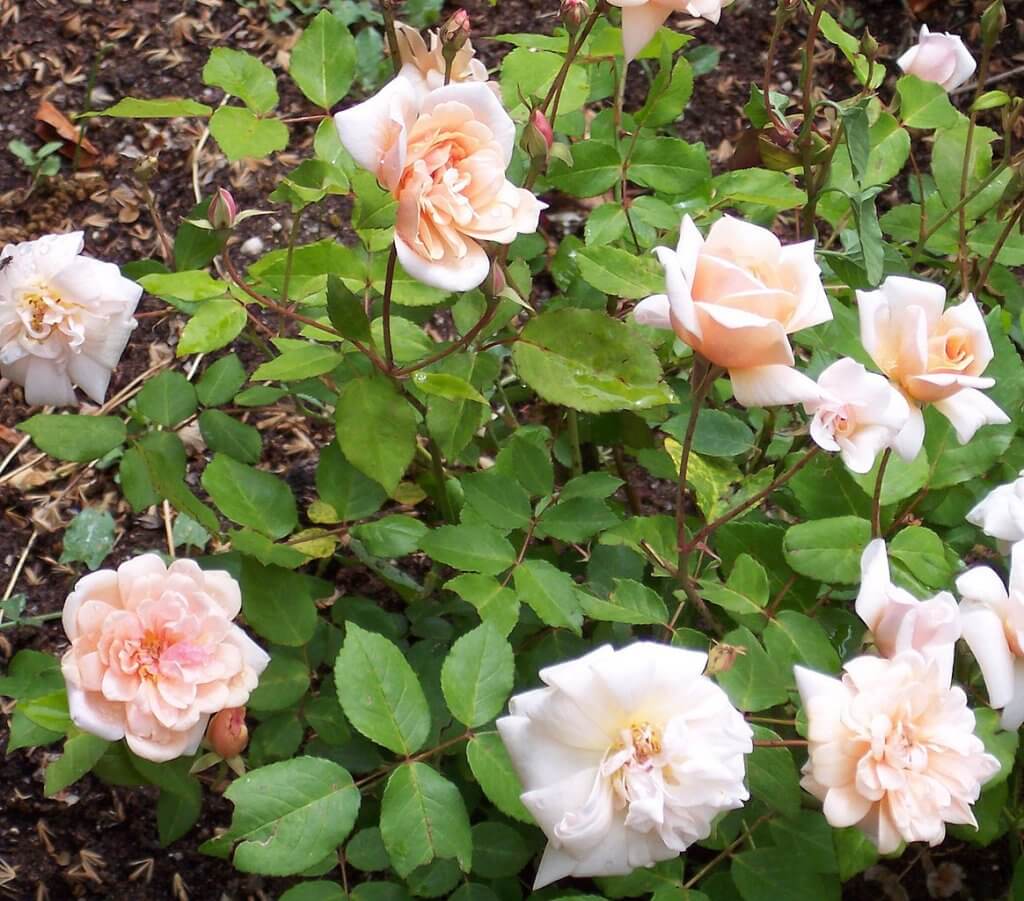
Is Rosa chinensis fragrant?
Yes, many cultivars of Rosa chinensis are known for their fragrant flowers.
The fragrance of the flowers can be described as classic and traditional, with a scent that is reminiscent of the classic “rose” fragrance. The intensity of the fragrance can vary from mild to strong, and it’s often most noticeable when the flowers are in full bloom.
What is Rosa chinensis used for?
While it is primarily grown for its ornamental beauty, it has also been used for cultural, traditional, and medicinal purposes.
Here are some of the ways Rosa chinensis is used:
- Ornamental Plant: One of the main uses of Rosa chinensis is as an ornamental plant. Its beautiful and fragrant flowers make it a popular choice for gardens, landscapes, and floral arrangements.
- Traditional Medicine: In certain traditional medicinal systems, parts of Rosa chinensis have been used for their potential health benefits. For example, some cultures have used rose petals, hips, or other plant parts in herbal remedies.
- Culinary Use: While not as common as other edible rose species, some varieties of Rosa chinensis have been used to make rose-infused products, such as rose water or rose-flavored desserts.
- Fragrance Production: The fragrant flowers of Rosa chinensis have been used to extract rose oil and rose water, which are used in perfumes, cosmetics, and aromatherapy products.
Is China Rose good for health?
Here are some ways in which Rosa chinensis has been used in traditional medicine and for health benefits:
- Rose Petal Infusions: Its rose petals are sometimes used to make herbal infusions or teas. These infusions are believed to have a calming and mild sedative effect. They are also thought to support digestion and promote relaxation.
- Digestive Support: In some traditional systems, Rosa chinensis petals have been used to soothe digestive discomfort, reduce bloating, and alleviate indigestion.
- Skin Health: Rose petals, including those from Rosa chinensis, have been used topically to create floral waters and skin toners. These preparations are believed to be beneficial for skin health, soothing irritation, and promoting a healthy complexion.
- Aromatherapy: The fragrance of Rosa chinensis flowers is valued in aromatherapy for its calming and uplifting effects on mood. Rose essential oil, extracted from various rose species including Rosa chinensis, is used in aromatherapy practices.
- Cardiovascular Health: Rose hips, the fruit of the rose plant, including Rosa chinensis, are known to be rich in vitamin C and antioxidants. Some traditional uses include preparing rose hip teas or supplements for potential immune-boosting and cardiovascular benefits.
- Immune System Support: Rose hips have been used for their potential to support the immune system due to their vitamin C content.
how to make rosa chinensis infusion or tea?
Ingredients:
- Fresh or dried Rosa chinensis petals
- Boiling water
Instructions:
- Boil Water: Bring a pot of water to a boil. Use fresh, filtered water to ensure a clean and pure infusion.
- Place the Petals: Place the prepared petals in a teapot, teacup, or heatproof container.
- Pour the Boiling Water: Pour the boiling water over the petals. Use approximately 1 to 2 teaspoons of dried petals or a handful of fresh petals per cup of water.
- Cover and Steep: Cover the container with a lid or saucer to trap the steam and essential oils. Let the petals steep in the hot water for about 5 to 10 minutes.
- Strain and Serve: After steeping, strain the infusion to remove the petals. You can use a fine mesh strainer or a tea infuser. Pour the infused liquid into cups and serve.
Other medicinal teas you may be interested in:
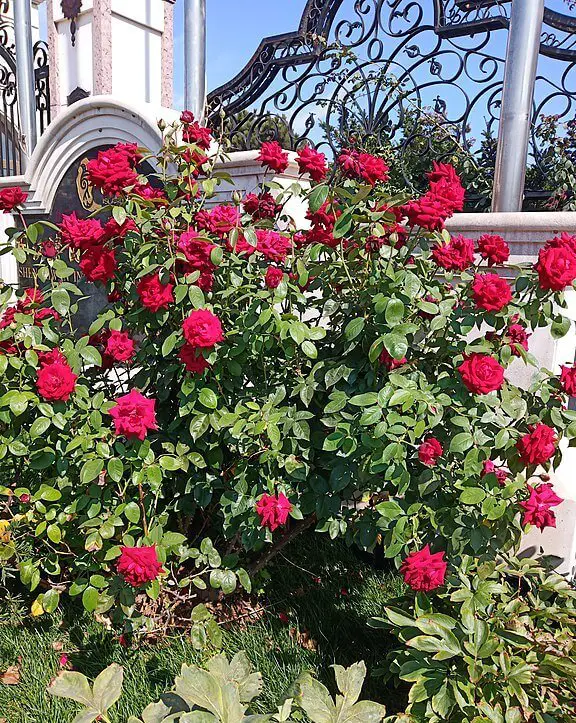
Is China rose safe to eat?
While Rosa chinensis is primarily grown for its ornamental beauty, it’s interesting to note that some cultures use part of this rose, including the petals, young shoot tips, flower buds, and flowers, in culinary preparations.
However, there is a layer of hair around the seeds of the fruit. These hairs can cause irritation to the mouth and digestive tract when ingested.
How to use China rose flowers in recipes?
- Fresh: Rosa chinensis flowers can be consumed fresh as a garnish for salads, desserts, or drinks. Their delicate fragrance adds a subtle floral note to your dishes.
- Infused: You can infuse the petals in water to create rose water or use them to flavor syrups, sauces, or beverages.
- Candied: Rose petals can be candied by brushing them with egg white, sprinkling them with sugar, and allowing them to dry. Candied rose petals are often used to decorate cakes and desserts.
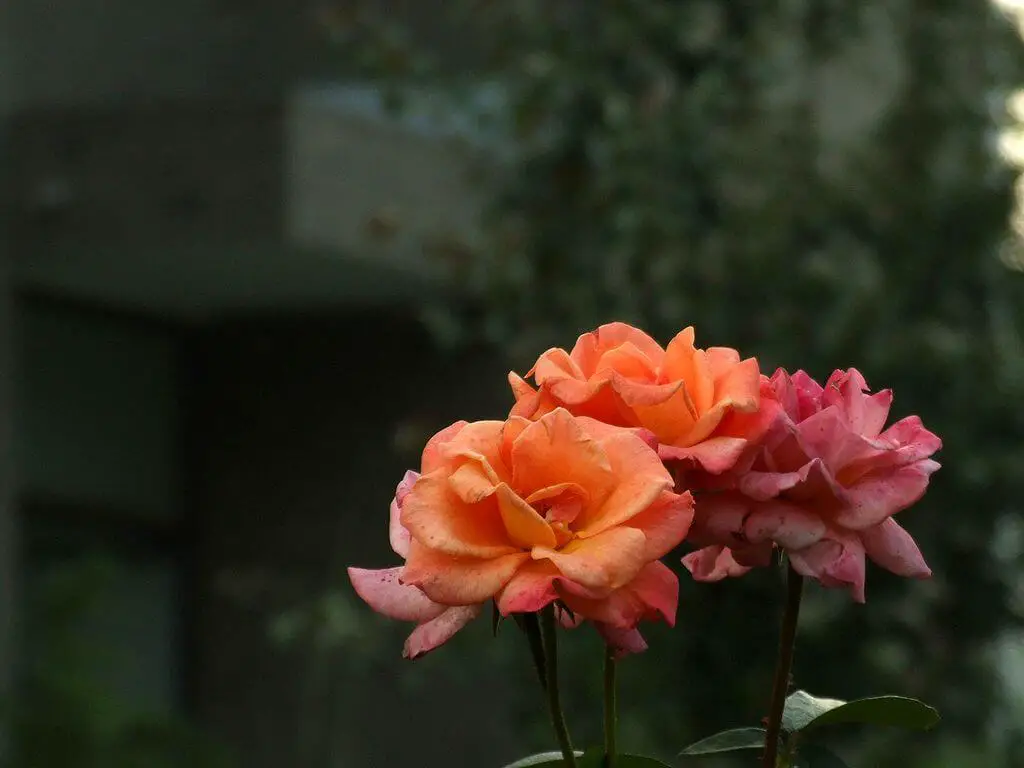
Can you grow China Rose in your backyard?
Rosa chinensis is generally suitable for growing in USDA hardiness zones 7 to 10.
Propagation:
- It can be propagated through various methods, including cuttings, layering, and seeds.
Select a Suitable Location:
- Choose a sunny spot in your garden that receives at least 6-8 hours of direct sunlight per day. China roses thrive in full sun.
2. Prepare the Soil:
- China roses prefer well-draining soil that is slightly acidic to neutral (pH 6.0-7.0). Amend the soil with compost to improve its structure and fertility.
3. Planting:
- Plant China rose in early spring or fall when the weather is cooler.
- Water the plant thoroughly after planting.
4. Watering:
- Keep the soil consistently moist, especially during the plant’s first growing season. However, avoid overwatering, as China roses don’t like to be in waterlogged soil.
5. Pruning:
- Prune China roses in late winter or early spring to remove dead or diseased wood and encourage healthy growth. You can also shape the plant for your desired size and form.
6. Support and Trellis:
- Depending on the variety, some China roses can be climbers. Provide support, such as trellises or arbors, for climbing varieties to help them grow upward.
Getting into the great, wet outdoors in search of edible plants, herbs, fruits and fungi is one of Sarah’s favorite outdoor pursuits. She thinks there’s nothing better than combining her passion for hiking with the start of the foraging season. Sarah’s definitely not afraid of a little rain and dirt, it’s all part of the fun.

